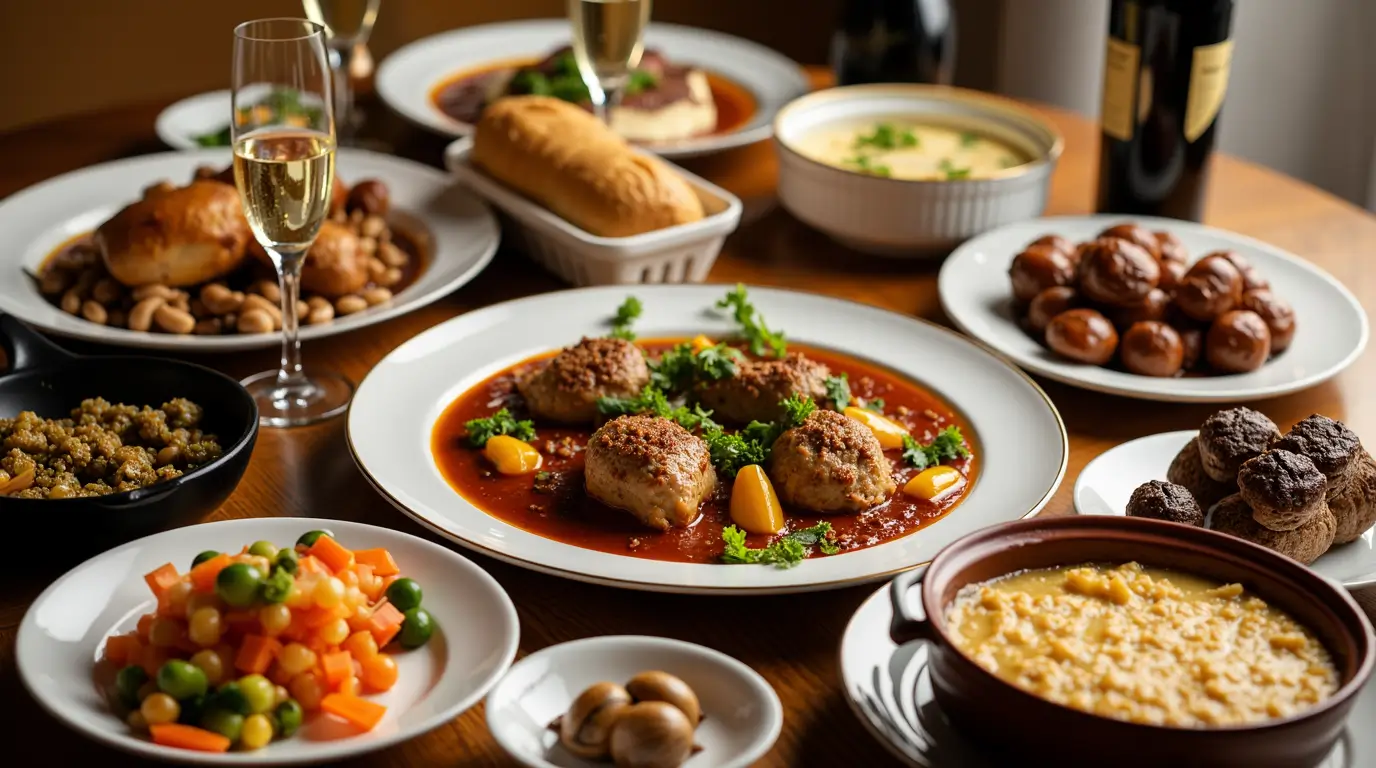Table of Contents
Introduction
France is globally renowned for its cuisine—a rich tapestry of flavors, techniques, and traditions that has evolved over centuries. French gastronomy, celebrated by chefs and food lovers alike, is viewed as both an art form and a hallmark of cultural identity. Whether you indulge in the delicacy of escargots, sample the comforting warmth of a pot-au-feu, or savor the complexity of a perfectly aged cheese, you are experiencing the product of an intricate culinary heritage.
Yet, for all its sophistication and international acclaim, French cuisine remains deeply tied to the land and its people. Regional diversity across France is extraordinary, resulting in distinct culinary specialties and variations that reflect local resources, climate, and customs. From the buttery and cream-rich dishes of Normandy in the north to the Mediterranean-inspired creations of Provence in the south, each corner of France possesses its own unique gastronomic profile.
In this article, we will embark on a comprehensive journey through French cuisine. We will delve into its historical and cultural development, explore the key ingredients that define it, discover iconic dishes, and learn about French table rituals. We will also uncover modern culinary trends and meet a new generation of chefs who have come to shape the future of French gastronomy.
Culinary Context and History
France’s culinary story is as intricate and layered as its architectural heritage. Its foundation was laid in the Middle Ages, when monastic communities produced a variety of cheeses and cultivated wine grapes. During this period, the concept of “terroir,” or the unique characteristics of a region’s climate and soil, began to define food production. Spices introduced via trade routes (such as pepper, cinnamon, and saffron) lent exotic aromas to banquets held by the nobility.
The Renaissance ushered in a transformational era for French cuisine. Influenced heavily by the Italian courts, especially when Catherine de’ Medici came to France in the mid-16th century, French aristocracy began to refine their tastes. Italian techniques in pastry-making and confectionery mingled with local French traditions, paving the way for an emphasis on presentation and elegance. With the birth of haute cuisine in the 17th and 18th centuries, the foundations of modern French cooking were firmly established. Key figures like François Pierre La Varenne codified techniques and recipes, marking the start of a distinctly French approach to food preparation.
Then came the French Revolution, which had far-reaching implications for cuisine. Nobles, who had employed personal chefs, lost their estates or fled the country. Many of these chefs opened restaurants, giving rise to the restaurant culture that endures to this day. As industrialization took hold in the 19th century, new tools and transportation methods permitted the faster movement of fresh produce and regional specialties from one part of the country to another.
Geographically, France’s size and varied climate have shaped regional gastronomic identities. The lush grazing pastures and cold seas of the north favor dairy-based dishes and seafood; the fertile central plains yield grains and prime livestock for charcuterie and roasts; the mountainous east is known for robust dishes featuring potatoes, cheese, and ham; while the warm south is replete with olive oil-based stews, fresh vegetables, and the distinctive herbs of Provence. Colonization and international trade also introduced ingredients from abroad—tomatoes, chocolate, and coffee, among others—which the French incorporated and adapted into their cooking.
Over the centuries, all of these factors combined to create a sophisticated, multi-layered cuisine that remains rooted in tradition yet open to innovation, a characteristic that continues to captivate and influence the rest of the world.
Key Ingredients and Local Products
One of the hallmarks of French cooking is its emphasis on fresh, high-quality ingredients. Chefs and home cooks alike value seasonality, relying heavily on produce at its peak flavor. This respect for ingredients is manifest in the local markets that populate French towns, where farmers and artisans showcase fresh cheeses, breads, charcuterie, fruits, and vegetables, often produced using methods honed over generations.
Dairy and Cheese: France boasts nearly 1,200 varieties of cheese. Regions like Normandy are famed for their Camembert and Pont-l’Évêque, while the Auvergne is known for the blue-veined Roquefort. The Alpine regions produce fondue-friendly cheeses such as Comté and Beaufort, whereas the Loire Valley and Provence pride themselves on goat’s cheese. Butter from regions such as Normandy and Charentes-Poitou is prized for its creamy richness, and cream is a common staple in sauces, soups, and desserts.
Herbs and Seasonings: French cuisine often employs herbs like thyme, rosemary, tarragon, and parsley, with herbes de Provence being a signature blend in the Mediterranean south. Mustard—particularly the Dijon variety—remains a global benchmark, lending a sharp yet refined flavor to dressings and sauces. Additionally, fleur de sel (hand-harvested sea salt) from Brittany adds a salty crunch and subtle minerality to dishes.
Proteins: Meats like beef, pork, chicken, and lamb feature prominently, often slow-cooked or braised to develop rich flavors. Duck is a signature protein in the south, contributing to specialties like confit de canard and foie gras. Seafood is integral in coastal regions; oysters, mussels, and fish are key to stews like bouillabaisse in Provence.
Produce: French markets overflow with seasonal fruits—strawberries, cherries, apricots in the warmer months, apples and pears in cooler seasons—alongside fresh vegetables such as shallots, leeks, haricots verts, and mushrooms. The concept of seasonality is crucial; dishes like ratatouille are traditionally made when eggplants, zucchini, and tomatoes are at their summer peak.
When shopping for ingredients, one can often find French specialty products in gourmet shops or well-stocked supermarkets worldwide. For the most authentic experience, visit local farmers’ markets in France or seek out artisanal importers who prioritize traditional and organic farming. Freshness and provenance are valued above all else, so reading labels and inquiring about sourcing are essential steps for those aiming to recreate French dishes at home.
Must-Try Traditional Dishes
French gastronomy boasts a cornucopia of classic dishes that have stood the test of time. Here are a few emblematic specialties that should be on every culinary enthusiast’s list:
Coq au Vin
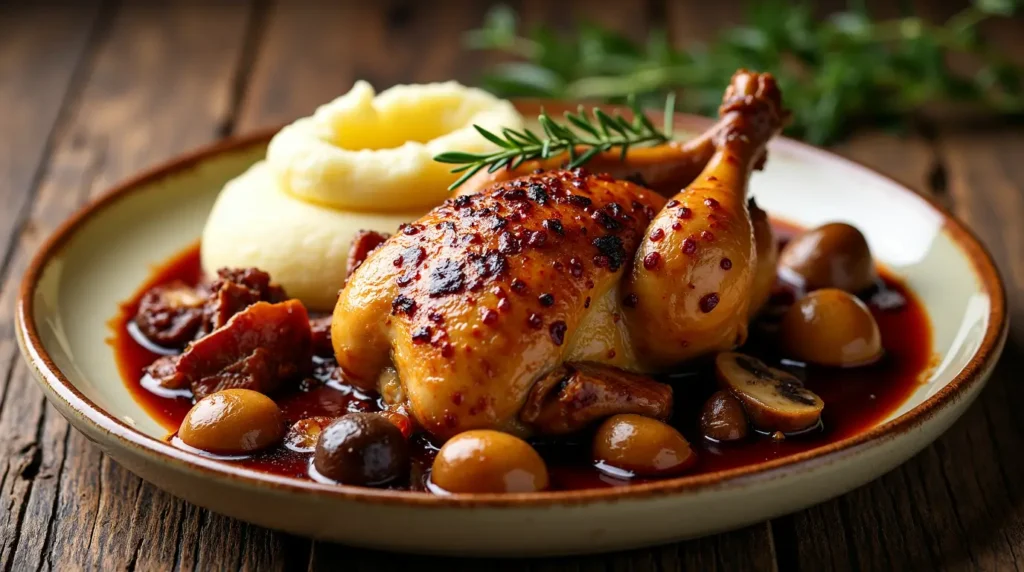
A slow-braised chicken dish cooked with red wine, bacon, mushrooms, and onions. Believed to have origins in Burgundy (though multiple regions claim it), coq au vin marries the earthy flavors of chicken with the richness of wine—a testament to the French tradition of long, slow cooking.
Bœuf Bourguignon
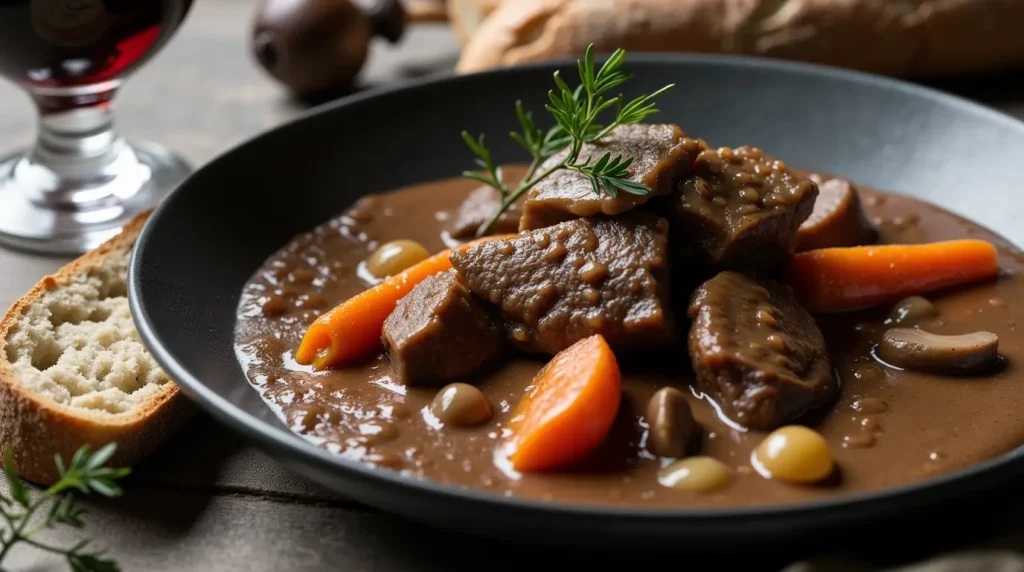
Another star of Burgundy, bœuf bourguignon is beef stewed in red wine with carrots, onions, and mushrooms. Originating as a peasant dish, it has become synonymous with French comfort food.
- Variations: Some cooks add pearl onions for sweetness, while others garnish with fresh parsley at the end.
Bouillabaisse
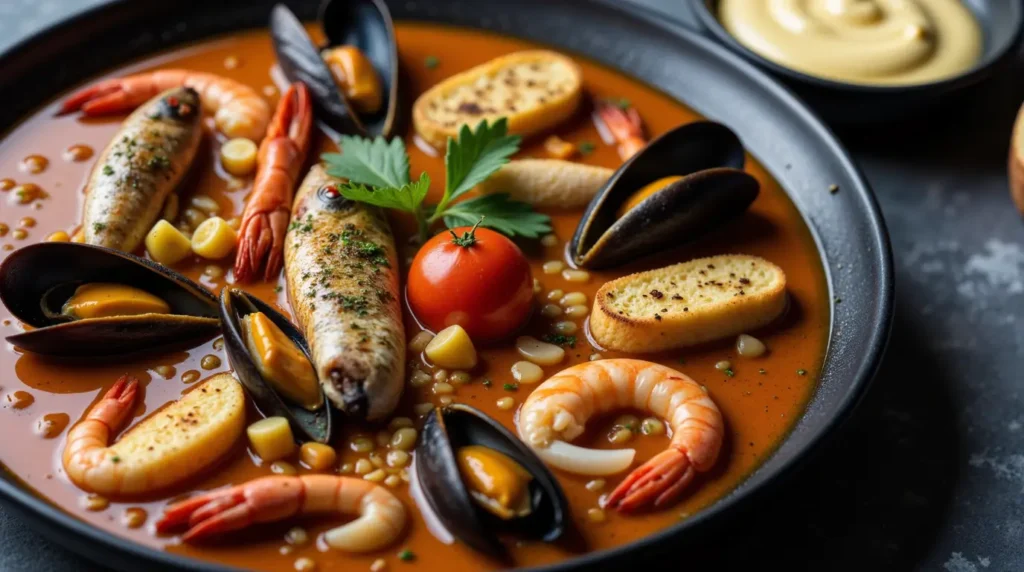
A fish stew that hails from Marseille in the sunny south of France. It traditionally features a variety of Mediterranean fish (such as rascasse and John Dory), shellfish, tomatoes, onions, and saffron, creating a heady broth.
- Regional Take: Each coastal town along the Mediterranean has its twist, incorporating local catches or adjusting the balance of herbs and spices.
Ratatouille
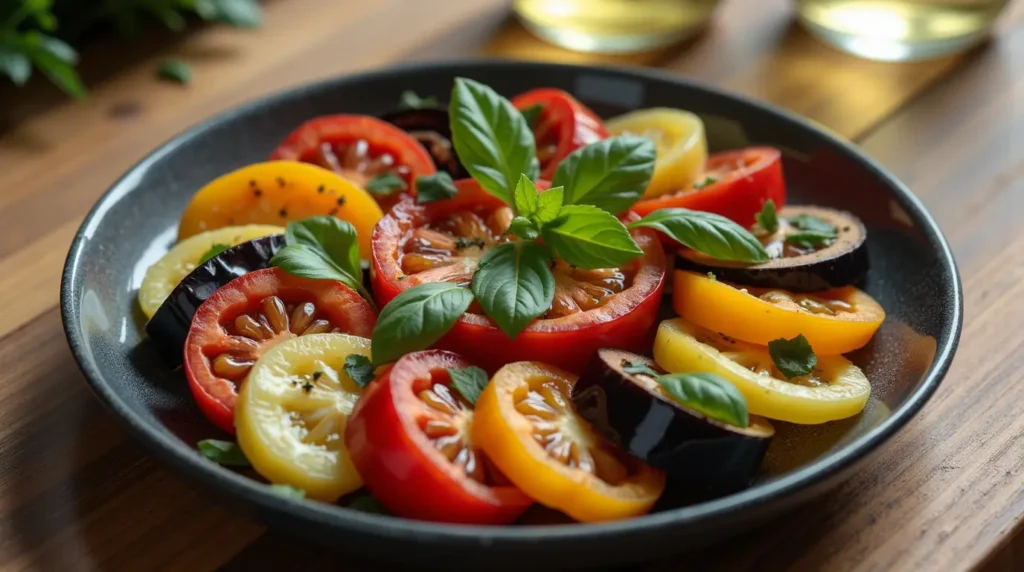
A beloved vegetable stew from Provence composed of zucchini, eggplant, peppers, onions, and tomatoes, gently cooked in olive oil and seasoned with herbes de Provence. It exemplifies the region’s sun-kissed flavors.
- Simplified Recipe Tip: Sauté sliced vegetables in batches to maintain texture, then combine them in a pan with garlic and herbs, letting the flavors meld slowly over low heat.
Crêpes

Originating in Brittany, these thin pancakes can be served sweet (with sugar, jam, or chocolate) or savory (with ham, cheese, and eggs). They are an iconic street food and a simple dish to replicate.
While each of these dishes may have slight variations from region to region, they remain cornerstones of French cooking, embodying centuries of culinary expertise and localized influences. Whether you choose the hearty warmth of a stew or the refined delicacy of escargots, these dishes showcase the depth and diversity of France’s gastronomic traditions.
Defining Characteristics of French Cuisine
Refinement and Balance: One of the defining traits of French cuisine is its emphasis on refined flavors and techniques. Even the simplest dish, such as an omelette, can be elevated to near-perfection through careful cooking methods. Chefs and home cooks pay close attention to ingredient proportions, temperature control, and timing.
Regional Nuances and Seasonality: French cooking is not monolithic; instead, it thrives on local differences. The use of butter, cream, and cider in the north contrasts with the olive oil, garlic, and tomatoes of the south. This variety creates a spectrum of flavors—from rich and hearty stews to light, herbaceous vegetable dishes. Moreover, dishes are seasonally driven, taking advantage of produce at its peak and thus guaranteeing robust, fresh flavors.
Combination of Simple and Complex: Contrary to popular belief, not all French dishes are complex or time-consuming. While haute cuisine is elaborate, numerous regional and family recipes rely on minimal ingredients and straightforward preparation—like a simple baguette or a perfect vinaigrette. When complexity arises, it often lies in refined sauces or layered pastry work, reflecting an enduring love for culinary craftsmanship.
Delicate Use of Herbs and Aromatics: Herbs such as thyme, bay leaf, tarragon, and parsley define the characteristic scent of French cooking. Combined with mirepoix (carrot, onion, celery), they form the base for countless stocks, sauces, and braised dishes. This subtle layering of aromatics results in a cuisine that is neither overly spicy nor excessively sweet, but rather balanced in its flavor profile.
For food enthusiasts looking to broaden their palate, French cuisine offers experiences ranging from buttery croissants at a sidewalk café to a comforting gratin on a cold winter’s night. Its trademark refinement, nuanced seasoning, and regional diversity render it endlessly captivating for those seeking new and sophisticated tastes.
Tips and Highlights to Encourage People to Try French Cuisine
A Journey Through Terroir: One of the most enchanting aspects of French gastronomy is its strong connection to the land. Each region tells a story through its dishes—Burgundy’s wine-rich stews, Provence’s olive groves and fragrant lavender fields, and Brittany’s salty sea air that flavors its oysters. Experiencing these varied terroirs firsthand offers an immersive cultural encounter that goes beyond simply enjoying a good meal.
Café Culture and Boulangeries: Part of the charm of trying French cuisine is the daily ritual of visiting a boulangerie for a fresh baguette or croissant. In the afternoon, a quick stop at a café for an espresso and a sweet pastry invites you to slow down and savor the moment. These seemingly small experiences offer a window into everyday French life, revealing a society that prioritizes quality and pleasure in its culinary habits.
Cookbook Explorations and Interactive Classes: For the kitchen-curious, French cooking classes—whether in person in a French village or online via virtual platforms—can be a delightful way to overcome any intimidation. Classic cookbooks by well-known chefs like Auguste Escoffier or more modern interpreters such as Julia Child also make for excellent guides. Try recreating simpler dishes at home to build confidence with French techniques.
Anecdotes and Cultural Appeal: Anecdotes about the origins of dishes—like the debated birth of tarte Tatin in a moment of accidental genius—add color to each recipe. French cuisine is interwoven with stories of love, family, and artistry, reflecting a deep cultural appreciation for pleasure and beauty.
For travelers and home cooks alike, these highlights serve as compelling reasons to discover and explore French cuisine. Its focus on high-quality, fresh ingredients and methodical preparation can elevate ordinary meals into celebrations of taste and tradition.
Table Rituals and Customs
A traditional French meal often unfolds in carefully observed courses, reflecting the country’s deep-seated respect for communal dining and conversation. While customs vary by region and household, certain overarching practices unite the French table.
Typical Meals:
- Breakfast (Petit Déjeuner): Traditionally light, often consisting of a tartine (bread with butter or jam) or a croissant, accompanied by coffee, tea, or hot chocolate.
- Lunch (Déjeuner): Historically the day’s main meal, especially in rural areas. It might begin with a starter (entrée in French parlance), such as a salad or soup, followed by a main course and possibly cheese or dessert. Many businesses still allow ample time for a leisurely lunch break.
- Dinner (Dîner): In modern urban settings, dinner has grown in importance, though it usually remains lighter than lunch. Soup or salad could precede a main dish, with cheese or fruit as a finish.
Aperitif and Digestif: A distinctly French tradition is the aperitif, a pre-meal drink served with small nibbles. It fosters conviviality, encouraging guests to relax before the meal proper begins. Post-meal, a digestif (often a spirit like cognac or Armagnac) sometimes follows to aid digestion.
Table Etiquette:
- Hands are expected to remain visible—resting on the table rather than on the lap—reflecting traditional customs.
- Bread is placed directly on the tablecloth (beside one’s plate) rather than on a separate bread plate.
- Avoid cutting lettuce; fold it with your fork to keep it whole.
Festivals and Celebrations:
National holidays like Bastille Day (July 14) or religious feasts such as Easter and Christmas bring forth specific culinary traditions, from celebratory pastries to elaborate roasts. Family gatherings often center around multi-course meals, where hours are spent at the table—chatting, toasting, and savoring.
This culture of mindful eating and prolonged social interaction reflects the core of French gastronomic identity: the meal is not merely about sustenance, but about sharing time, tradition, and pleasure.
Modern Trends and Culinary Fusions
French cuisine, while firmly rooted in tradition, continues to evolve under contemporary influences. Globalization and increased travel have inspired chefs to incorporate international ingredients—think miso-spiked sauces or the addition of lemongrass to classic fish dishes. These fusions reflect the dynamism of modern gastronomy, demonstrating that even a canon as established as French cuisine can be enriched by foreign flavors.
Young Innovators:
A rising cohort of young French chefs is breathing new life into time-honored recipes. They retain the techniques and respect for ingredients that define French cooking but infuse their menus with fresh ideas—whether through playful plating or unexpected flavor combos. Restaurants in Paris, Lyon, and Bordeaux—cities considered gastronomic hubs—showcase this synergy, offering reinterpretations of coq au vin or bouillabaisse that incorporate lighter sauces, unusual garnishes, or vegetables in place of heavier animal-based components.
Vegetarianism and Farm-to-Table:
Like much of the world, France has witnessed a growing interest in healthier, more sustainable lifestyles. While vegetarian and vegan offerings were once scarce, they are increasingly available. Farm-to-table dining is also on the rise, with chefs partnering directly with local producers, ensuring that ingredients are ethically sourced and of the highest quality.
Organic and Biodynamic Wines:
France’s wine industry, a pillar of its culinary identity, is also adapting. Biodynamic and organic wines have garnered increasing attention as consumers become more mindful of environmental impact. Vineyards across regions like Alsace, Loire, and Provence are championing natural winemaking methods, further diversifying the market.
These trends prove that French cuisine remains as vibrant as ever, pairing its storied heritage with 21st-century sensibilities. While preserving the core principles of technique and terroir, it is open to experimentation—promising that future generations will continue to savor, adapt, and reinvent this celebrated gastronomy in exciting new ways.
Conclusion and Call to Action
From the humble baguette to the intricacies of haute cuisine, French gastronomy tells a story of regionally diverse traditions, historical evolutions, and passionate artistry. We have ventured through the country’s culinary background—shaped by royal courts and revolutionary changes—and examined the signature ingredients that make French food so special. We have explored the hallmark dishes that define entire regions, the refined flavor profiles that captivate food enthusiasts, and the rich table customs that encourage leisurely, convivial meals.
At the same time, French cuisine is not a relic; it continues to adapt. Young chefs are revisiting classic dishes, sustainability movements are influencing how producers cultivate the land, and global interactions have introduced new flavors and techniques. These factors make French cuisine not only a culinary mainstay but also a vibrant, evolving tapestry, well worth exploring.
If you have tried your hand at French cooking or experienced a memorable French meal—whether a rustic coq au vin or an elegant filet mignon—share your stories and favorite recipes with us. Are there questions you have about perfecting a gratin or selecting the right wine pairing? Let us know, and we’ll happily explore those in a future article. Next time, we might dive deeper into the art of French pastry-making, an entire realm waiting to be discovered.
Bon appétit!

